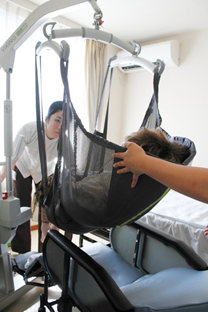2013年5月3日 The Fiscal Times(電子版)
アメリカも日本がこの分野のリーダーであると見ている
アメリカのThe Fiscal Times(電子版)に掲載のHow Robots Are Changing the Way We Age(ロボットは私たちの年の取り方をどのように変えるのか)という記事に私のコメントが引用されました。
記事全体はアメリカの高齢社会にロボットがどのような役割を果たせるのかという内容です。多くの国がそうであるようにアメリカも日本がこの分野のリーダーであると見ており、とりわけ介護ロボットへの関心は高いものがあります。
というのは、アメリカも日本同様、人数の多いベビーブーマーが高齢者の仲間入りをしつつあるからです。アメリカのベビーブーマーの定義は1946年生まれから1964年生まれ。日本よりも年代が広く、かつ人口が多いことから総勢7,800万人の人数が存在します。
この莫大な人数の人たちの健康状態をどう維持するか、健康状態が悪化した時、誰が、どのように支えるのかについては国としての方針があまりはっきりしていないのが現状です。
先日シンガポールで開催されたAAIF2013でも議論しましたが、超高齢社会になると何がどうなるのかという現実に最も理解しているのは日本です。日本での試行錯誤は高齢化するアメリカでも役に立つのです。介護ロボットの分野は、その象徴的な部分と言えましょう。以下、元記事の抜粋です。
THE INDUSTRY LEADER
Japan has been leading the way in this field. For fiscal year 2013, the Japanese government provided $24.6 million to companies focusing on robotics for elder care, according to Hiro Murata, CEO for the Center for Studies on Aging Societies and a professor at Tohoku University in Sendai, Japan. Emerging technologies focus on all sorts of elder care, from assistance with manual labor to tasks that improve cognitive abilities and maneuvering with limited mobility.
Japan has tested a variety of robotic technologies, including PARO, a seal robot that responds to an owner’s touch and provides engaging companionship. Developed at MIT’s Artificial Intelligence Lab, PARO was commercialized in Japan in 2005 followed by the U.S. in 2009. Early studies show that it benefits some Alzheimer’s patients, easing depression and reducing agitation. It retails for $6,000 or can be leased for $200 a month. To date, over 2,000 have been sold in Japan, with only 100 sold in the U.S.
Honda is continuing to refine a robot it developed in 2006, ASIMO, a four-foot-three robot that can help around the house or assist someone confined to a bed or wheelchair. Another Japanese product is the hybrid assistive limb, an exoskeleton suit offered by Cyberdyne, which helps those who have been paralyzed or recovering from a stroke. The robotic suit has electrodes that attach to the skin and detect nerve activation coming from the brain to the muscle. A device controls a set of motors at the joints so that the suit’s arm, attached to the limbs, moves in tandem to the command given to the limbs.
Majd Alwan, executive director of the LeadingAge Center for Aging Services Technologies, says Japanese robotics technology gets more attention from private industry than in the U.S. because the Japanese are more accepting culturally of robotic technologies in general while U.S. consumers still prefer human interaction.





